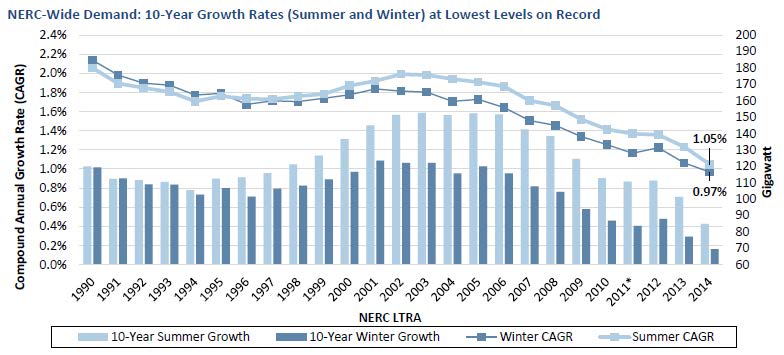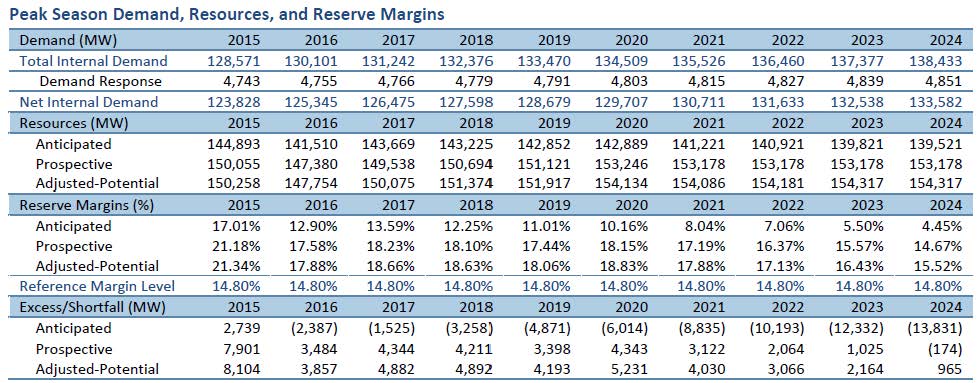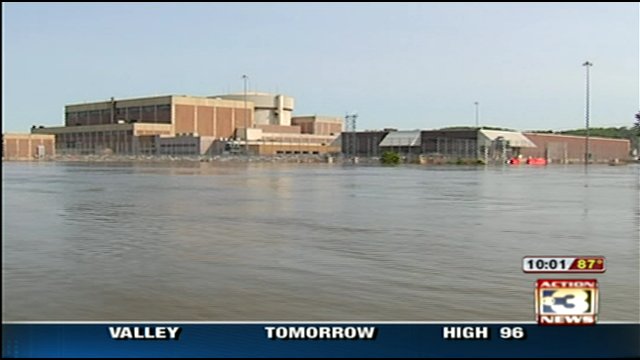Minnesota nuclear plants in the news
March 5th, 2015
 That’s Prairie Island Nuclear Generation Plant behind Kenya…
That’s Prairie Island Nuclear Generation Plant behind Kenya…
Two nuclear issues in today’s news, one at Prairie Island and one at Monticello.
Prairie Island in the Beagle:
Prairie Island Unit 2 safely shut down; operators investigating fire alarm
And in the STrib:
At Monticello, it seems there are recurring security problems, in the St. Cloud Times:
Feds continue stepped-up oversight of Monticello plant
And in the STrib:
The plant is committed to making safety improvements, Gardner said.
And here’s the Forum view of the Senate Environment and Energy Committee hearing on repealing the nuclear moratorium — no mention whatsoever of Dr. Arjun Makhijani:
Nuclear power moratorium debate returns
NUCLEAR?!? What is the Minnesota Senate thinking?
March 2nd, 2015
That’s “our” reactor, the Prairie Island Nuclear Generating Plant, here in Red Wing, it’s within the city limits (which were expanded to include the plant). I represented Florence Township from 1995, when Xcel, f/k/a NSP, applied to put nuclear waste in Florence Township under the “alternate site mandate,” and that went on, and on, and on, until they finally withdrew their application at the NRC in … what, 1999? 2000? That’s one I thought would never end. But that’s the thing about nuclear, it’s never over.
QUICK — CONTACT THE LEGISLATORS AT THE BOTTOM OF THIS MISSIVE.
There are two bills before the Senate Environment and Energy Committee TOMORROW:
- SF306 is simply worded, deleting the Minn. Stat. 216.243, Subd. 3b prohibition of new construction of a nuclear plant and changes it to “Additional storage of spent nuclear fuel” and over the previous language that states: “Any certificate of need for additional storage of spent nuclear fuel for a facility seeking a license extension shall address the impacts of continued operations over the period for which approval is sought.” It’s authored by Kiffmeyer, coauthored by Dahms and Anderson.
- SF0536 is even worse, authored by Anderson only (see also HF338 sponsored by O’Neill ; Newberger ; Garofalo ; Howe ; Baker ; McDonald ; Nornes). SF0536 lists only Anderson as an author, and, well, “Let’s build a nuclear plant!” Here’s the language:
 So we have a blanket repeal of the nuclear construction prohibition, and a specific opening for a Certificate of Need for a nuclear generator at the Monticello site.
So we have a blanket repeal of the nuclear construction prohibition, and a specific opening for a Certificate of Need for a nuclear generator at the Monticello site.
Authors contact info is linked above, and emails for Senate Energy committee members and the authors are also listed below.
Whether it’s targeted as a replacement for the Fukushima Daiichi style GE plant, or whether it’s to add and operate a second reactor, WHY?
First, there’s no need. There is a glut of electricity, as our friend, Xcel’s Ben Fowkes said, when they could no longer keep up the GROW GROW GROW fiction. Here’s the Seeking Alpha transcript of the XEL Earnings Call, January 31, 2013.
For last year:
From Xcel’s IRP (Docket 15-21), p. 45 of 102:
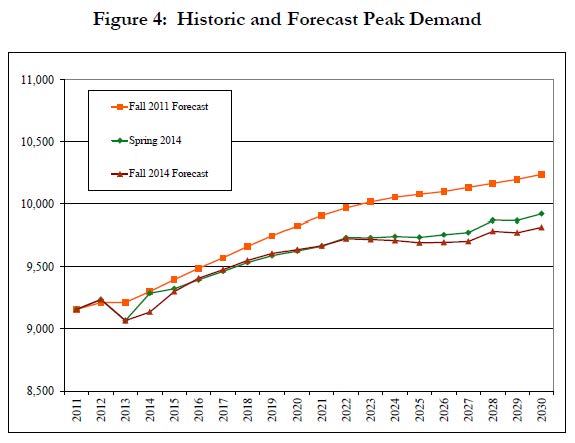 And here’s what they had to say about that (note they do NOT go back further than 2011, so we don’t get to see the 2000-2010 numbers):
And here’s what they had to say about that (note they do NOT go back further than 2011, so we don’t get to see the 2000-2010 numbers):
We forecast a period of relatively flat growth such that our median base peak will increase only 0.4 percent in each year of the planning period…
That chart is NOT consistent with the 2014 SEC 10K filing, which shows a 2014 peak demand of 8,848 MW (info below is linked, see p. 9 at 10-K link):
That lower number is consistent with the downward trend of the 2014 NERC Long Term Reliability Assessment, now showing growth rates at lowest levels on record (note that it has NEVER been close to the CapX 2020 “forecast” of 2.49% annually):
And here’s the picture for MISO from the 2014 NERC Long Term Reliability Assessment:
2014 NERC Long Term Reliability Assessment, p. 38 (or p. 46 of 115 pdf).
Also from the 2014 SEC 10-K link:
 |
|
So we don’t “need” it, there’s no talk of a new nuclear plant in their recently filed IRP. So why???
And the “WHY?” may be clearer when taken into context with last week’s hearing at House Energy, where the intent, in part, behind legislation there was to make Minnesota an exporter of energy. Again, WHY? Why make the state an exporter of energy? And if we do what would that do for our rates here? How does that fit with Xcel’s well funded plan to institute its e21 Initiative, and how does that fit with Xcel’s desire to use ratepayer money to find other market options? The House bill would let natural gas plants be built without a Certificate of Need, whether by an IPP or regulated utility, with the key being that they are selling into the MISO grid, and not for Minnesota native load.
But nuclear is SO expensive! First, there’s an immediate example of nuclear construction cost overruns right here in Minnesota, at the Monticello nuclear plant, where they went way beyond what was approved in the Certificate of Need:
Xcel management blamed for cost overruns at Monticello
So what was that about? Costs more than doubled, increased by a factor of 2.33!!! From the article:
And let’s look at new construction, the first new nuclear plant in the US in 30 years:
C&U disputes Southern Co. claim for $247 million in penalties for cost overruns at Plant Vogtle
The cost punchline on the Vogtle plant? Southern, Westinghouse and CB&I are already in court over previous cost overruns on the project, which is currently expected to cost $14.5 billion.
Here’s that other project:
Shaw Power Group, Westinghouse, face cost issues at S.C. project.
The cost punch line here? The NRC is expected to act soon on the Summer license. Summer is projected to cost about $9 billion.
Building new plants? Well, NEI has some info, BUT it’s outdated, nuclear has not caught up, and this is the most current I can find on the site (HERE’S THE WHOLE REPORT):
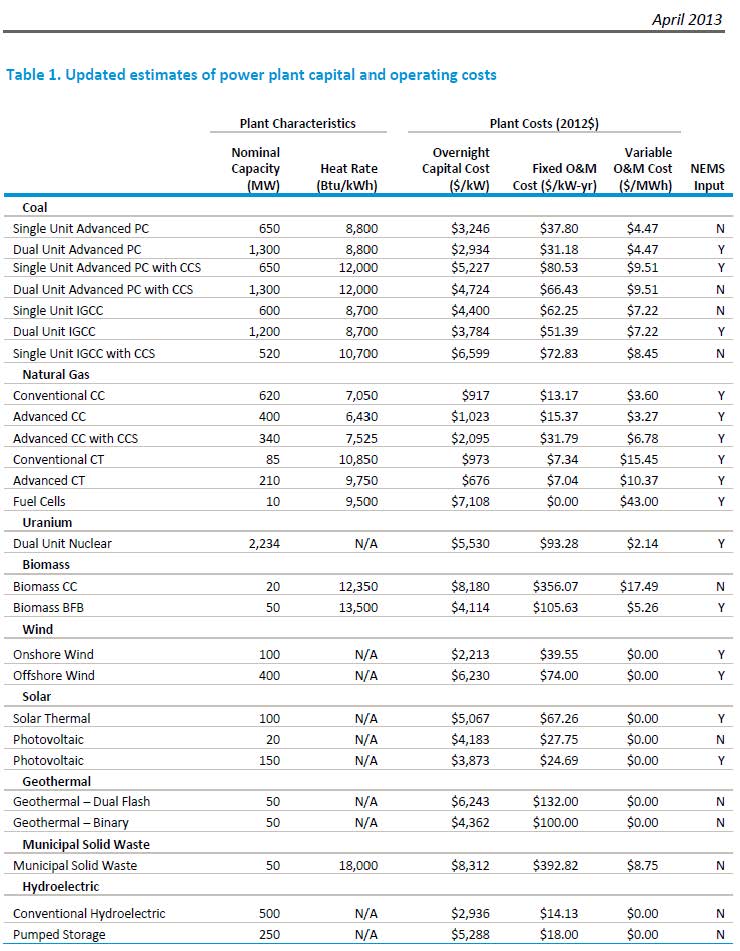 So please explain — why would anyone want to build a new nuclear plant?
So please explain — why would anyone want to build a new nuclear plant?
- There is no need.
- They cost so much that it’s unreasonable to even consider, and is the definition of imprudent!
Why are Reps. Kiffmeyer and Anderson trying to make this a possibility? Is this for real? Is it a diversion from some other issue?
CONTACT INFO FOR LEGISLATORS:
To contact the Senate Energy and Environment Committee, go to COMMITTEE LINK, because many MN Senators have form access, not direct emails. Boo-hiss… Here are the emails listed, but go to link to see the buttons for the Senators with form access only:
sen.john.hoffman@senate.mn; sen.david.osmek@senate.mn; sen.michelle.benson@senate.mn; sen.david.brown@senate.mn; sen.lyle.koenen@senate.mn; sen.julie.rosen@senate.mn; sen.bev.scalze@senate.mn; sen.matt.schmit@senate.mn; sen.bill.weber@senate.mn
Senate authors: sen.mary.kiffmeyer@senate.mn; sen.gary.dahms@senate.mn; sen.bruce.anderson@senate.mn
SF306 is authored by Kiffmeyer, coauthored by Dahms and Anderson, click names for links!
SF0536 is authored by Anderson only.
HF338 is sponsored by O’Neill ; Newberger ; Garofalo ; Howe ; Baker ; McDonald ; Nornes, click names for links!
Romney’s Energy Plan – much ado about nothing
August 23rd, 2012
.

FULL DISCLOSURE: I’m a bumper-sticker carrying member of Dogs Against Romney.

A link to Romney’s Energy Plan, “The Romney Plan for a Stronger Middle Class: ENERGY INDEPENDENCE,” showed up in the inbox today, so I printed it out, got out the highlighter… but I was SO disappointed, there’s hardly anything in it, about half of it is quotes and links from news articles. For the most part, this is about oil. OIL, not ENERGY. Oil is only one piece of our energy use and needs. That’s not a plan. It looks like something written by a campaign intern not yet graduated. The structure is a heading, a few bullet points, and a narrative paragraph, followed by the news articles. But the good news for me this morning is it left much less to read, highlight and critique!
T. Boone Pickens apparently doesn’t like it:
Pickens got an early look at the outline for the 21-page Romney plan, which will be introduced during a speech in Hobbs, N.M. Thursday.
“I was disappointed that he didn’t mention natural gas,” Pickens said, referring to the Romney plan. “The United States has more natural gas than any other country in the world…I cannot believe an energy plan that I saw, and I know I saw the outline, but there was no mention of natural gas.”
But TBP, it DOES mention natural gas, often, do a search (but there’s not much of substance about it, or anything else).
Let’s take a look. The first sentence is where I start having problems with it:
A crucial component of Mitt Romney’s Plan for a Stronger Middle Class is to dramatically increase domestic energy production and partner closely with Canada and Mexico to achieve North American energy independence by 2020.
So he’s talking “North America” and more importantly, INCREASE energy production. I would guess that “partner closely with Canada and Mexico” means to take their oil. There’s also a focus on “lower energy prices” which is not going to do anything but create more energy dependence through increased use and reliance on a cheap, illusory “plentiful” supply.
The focus on this “plan” is oil, and increasing domestic production. There is not a word about decreasing non-domestic imports.
Back to the “plan” area by area, all 9 sections, 31 bullet points and 16 paragraphs (not much of substance):
- An Achievable Goal: Energy Independence by 2020. (there’s ONE paragraph) It’s not US Energy Independence, it’s using Canadian and Mexican oil. And it’s about open access — I don’t see anything about the impacts of the ND oil rush, the gas rush in PA, NY and subsequent waste injections in Ohio and elsewhere, destruction of the aquifers and exploding wells and flammeable tap water nothing.
- The Result: The Emergence of an Energy Superpower. (here we get TWO paragraphs) This section makes claims of over 3 million jobs, $500 billion addition to GDP, reduced trade deficit, $1 trillion in revenue for federal state, and local governments, lower energy prices for “job creators and middle-class families,” and national security because we’re not beholden to unstable but oil-rich regions. What I want to see are the assumptions, how much of what has to be extracted to achieve this, show me the numbers. I also want to see numbers on use of federal lands, OUR lands, not oil company lands.
- The Result: Resurgence in American Manufacturing. (here we’re back to ONE paragraph). Stresses that manufacturers will benefit by lower energy and feedstock prices. ??? Most manufacturers use electricity, not oil, to power their operations. What are these assumptions based on? One article cited is about a steel plant opening up in Youngstown, Ohio, with 350 jobs making seamless pipes for fracking, the same fracking that has been pumping in fracking waste near Youngstown and causing earthquakes in the area. Is this a reasonable tradeoff? Steel plant and 350 jobs for waste and earthquakes? Has anyone checked the aquifer lately?
- The Romney Agenda: Federal Lands. (WOO-HOO, TWO paragraphs here). Yes, let’s talk about federal lands. State jurisdiction over federal lands within a state? State regulatory process “deemed to satisfy all requirements of federal law” ???? It pushes “STRONGER” and “IOGCC” and if you google “STRONGER” nada, have to get to “State Review of Natural Gas Environmental Regulation” to have it come up. Look at the formation of “STRONGER.” And IOGCC — I come up with the Interstate Oil and Gas Compact Commission in Oklahoma, and a big focus of theirs is CO2 Capture and Storage and we know what a scam that is. The narrative brags that “The state of North Dakota can permit a project in 10 days, Colorado does it in twenty-seven.” The articles cited notes that “In Ohio, it takes 14 days.” In talking about ramping up use of federal lands, there is no recognition in his “We Built It” mindset that this is about exploitation of FEDERAL lands, OUR land, blatant corporate welfare. Corporate welfare? Well, what else would you call it where Peabody buys for $0.25/ton and sells for $80-100/ton export? No, Peabody, you’re not building it, you’re stealing it from us.
- The Romney Agenda: Offshore Areas. (here we get TWO paragraphs again). There is no mention of the BP spill and its impact on feasibility and reasonableness of offshore drilling. Oh, and COST, because the cost of spills needs to be in that cost/benefit analysis. And again, whose land is this, who owns the oceans? Not the oil companies. Romney is all for “opening greater access and streamlining permitting…” and we know what that means.
- The Romney Agenda: North America. (here we get another TWO paragraphs) This is about Canada and Mexico, the XL pipeline, objecting to Canada exporting it, without mention of intent of exporting much of that oil from U.S. if it got down to the Gulf in the pipeline. Romney says it outright, at the top, “Approve the Keystone XL pipeline.” It also bullet-points “Institute fast track regulatory approval processes for cross-border pipelines and other infrastructure.” Pipelines and transmission, probably under the Dept. of State as with XL pipeline. The “plan” claims that Canada and Mexico are wanting partnership and collaboration, and that if we do that, “…America can guarantee itself a reliable and affordable supply of energy while also opening up new opportunities for American businesses and workers in the region.” Region — opening up new opportunities for American busniesses and workers in Mexico and Canada. Oh… right..
- The Romney Agenda: Resource Evaluations. (here we get another TWO paragraphs) This section is about assessment and inventory. Offshore resource exploration it seems would be encouraged and maybe performed by the feds and extraction of Canada and Mexico’s resource information as well. Note the references to “seismic” on this page. Messing with the earth creates seismic impacts, as evidenced in Pennsylvania, Oklahoma and Ohio related to fracking and waste injection. (Oh, and I’ve not seen waste mentioned anywhere here, BIG issue.)
- The Romney Agenda: Regulatory Reform. (here we get yet another TWO paragraphs). This is more of the strengthen environmental protection through gutting regulation, the angle I find SO offensive. Gutting regulation guts jobs, and regulation creates jobs both for industry and regulators! And the projects typically get permitted and get built. What are they complaining about? The MPCA doesn’t even look at expired permits, only new ones, because they don’t have the staff or budget, and because they haven’t been directed to by their boss, the Governor. But more importantly, without environmental review and regulation, we’d have more really stupid projects than we’d otherwise have. In Minnesota, MPCA is responsible for federal review delegated to the state, yet how often do they deny a permit? The PUC is responsible for need determinations and routing/siting permits, and the only projects they’ve denied have been vaporware projects that don’t have a PPA or a project to speak of. Without Minnesota environmental review and regulation, we’d have vaporware Excelsior Energy’s Mesaba Project on the Range, we’d have Kenyon and Goodhue wind projects here in Goodhue County, and we’d have the utterly unnecessary Big Stone II coal plant up and running. From what I can see, the PUC has never met a transmission line it didn’t like. Romney has accused Obama of bankrupting the coal industry, but Obama has been a friend of coal, promoter of IGCC, he’s from a coal state and is in the pockets of coal lobbyists. EH? The “plan” goes on: “But statutes and regulations that were designed to protect public health and the environment have instead been seized on by environmentalists as tools to stop development altogether.” OK, tell me what projects were stopped by “environmentalists” and tell me what projects were stopped because by regulatory agencies because they’d violate regulatory provisions? I’ve been looking at this in association with Dayton’s “review of environmental review” and note that the MPCA only rarely denies a permit, but permits expire and the plants spewing pollution are allowed to continue operating without a renewal application or any review! There is no pattern of delay in issuing permits. Romney, show me the data! He wants disclosure of “federal funds spent reimbursing groups for lawsuits against the government.” DUH, where anyone sues the government for flagrant violations of federal law, and where fees and costs are paid as part of the win, that is public information, just look at the settlements! How else would federal law be enforced? They’ve gutted the agency budgets and they’re not doing review, so it’s up to the citizens. Romney says that “laws should be carefully crafted to support rather than impede development.” It is not an agency’s job to SUPPORT development, it is their job to impartially review permits, conduct analysis. What Romney is promoting is the MN Dept. of Commerce style of regulation, where according to PUC Commissioners, it looks like Commerce is representing the project applicant. “Repetitive reviews and strategic lawsuits should not be allowed to endlessly delay progress or force government into imposing rules behind closed doors that it would not approve in public.” Examples please, because I haven’t a clue what you’re talking about! An article cited states that “individuals have accounted for just 7% of Plaintiff cases filed under the EAJA while Environmental Groups have accounted for 30%. First, what’s the other 63%? Second, is it the Romney position that Environmental Groups are suing too often? That individuals should sue the government more? How would we do that? Please let me know, I’d be happy to comply!
- The Romney Agenda: Innovation. (and we get another two paragraphs). “The federal government has a role to play in facilitating innovation in the energy industry.” Please explain. Isn’t it the Romney position that government should not insert itself into business? “Instead of distorting the playing field, the government should be ensuring that it remains level.” Level? When has it been level? “… success should be defined as eliminating any abrriers that might prevent the best technologies from succeeding on their own.” This is straight out of the Wind on the Wires playbook, always looking to eliminate barriers, particularly to transmission (she says, admittedly a barrier to transmission herself!). Are they looking at cutting 1703(d) coal perks anytime soon? See the “End Polluter Welfare Act of 2012” for specific examples of coal perks (GO Bernie!). And last but not least, last but everlasting, Romney is promoting nuclear power, to “revitalize nuclear power by equipping the NRC to approve new designs and to license approve reactor designs on approved sites within two years.” Even Xcel admits it has no desire to build a nuclear power plant. And new plants are not needed, there is a glut of electricity that is leading utilities to close down their smaller dirty coal plants and recently, even some larger ones. So why would he promote nuclear after Fukushima Dai-ichi? Our Monticello plant is the same design. Earth to Mars…
Another Allis nuclear plant
March 8th, 2012
Alan’s been digging around looking at the old nuclear demonstration plants, particularly since my father worked on the Elk River plant in Minnesota, now decommissioned. and lo and behold, Genoa is/was another Allis-Chalmers nuclear plant, although it’s a different branch of the family:
How bizarre…
And now for something a little more current:
Don’t forget that our Monticello GE reactor is similar to Fukushima reactors. Enough about upgrades – SHUT THEM DOWN!
Hooray! A 2.206 Petition re: Ft. Calhoun & Cooper nukes!
January 24th, 2012
Thanks to Kelly Fuller for the heads up. A 2.206 Petition has been filed about the unsafe conditions at the Ft. Calhoun and Cooper plant. Note that the Petitions were from July, 2011, and it takes six months for it to rise up to the Federal Register.
Here it is:
[Federal Register Volume 77, Number 15 (Tuesday,
January 24, 2012)]
[Notices]
[Page 3515]
From the Federal Register Online via the Government
Printing Office [www.gpo.gov]
[FR Doc No: 2012-1370]
[[Page 3515]]
-----------------------------------------------------------------------
NUCLEAR REGULATORY COMMISSION
[Docket No. 50-285, License No. DPR-40; Docket No. 50-298,
License No. DPR-46; NRC-2012-0014]
Request for Action Against Omaha Public Power District
and Nebraska Public Power District
Notice is hereby given that by petitions dated
June 26 and July 3, 2011, respectively, Thomas Saporito
(the petitioner) has requested that the U.S. Nuclear
Regulatory Commission (NRC or the Commission) take
escalated enforcement actions against Omaha Public
Power District, the licensee for Fort Calhoun Station,
Unit 1 (FCS), and Nebraska Public Power District, the
licensee for Cooper Nuclear Station (Cooper). The
petitions dated June 26 and July 3, 2011, are publicly
available in the NRC's Agencywide Documents Access and
Management System (ADAMS) under Accession Nos. ML11182B029
and ML11192A285, respectively.
The petitioner has requested that the NRC take action
to suspend or revoke the NRC licenses granted for the
operation of nuclear power reactors and issue a notice
of violation with a proposed civil penalty against the
collectively named and each singularly named licensee
in this matter--in the amount of $500,000 for Fort
Calhoun Station and $1,000,000 for Cooper. Additionally,
the petitioner requested that the NRC issue confirmatory
orders to prohibit restart at FCS and to bring Cooper to
a ``cold shutdown'' mode of operation until such time as:
(1) The floodwaters subside to an appreciable lower level
or sea level;
(2) the licensee upgrades its flood protection
plan;
(3) the licensee repairs and enhances its current flood
protection berms; and
(4) the licensee upgrades its station blackout procedures
to meet a challenging extended loss of offsite power due
to floodwaters and other natural disasters or terrorist attacks.
As the basis for these requests, the petitioner stated
that:
(1) The licensees' installed flood protection measures
and systems and barriers at FCS and Cooper are not
sufficient to adequately protect the nuclear reactor from
a full-meltdown scenario like that currently unfolding in
Japan; and
(2) the licensees' station blackout procedures are not
sufficient to meet a challenging extended loss of offsite
power due to flood waters and other natural disasters or
terrorist attacks.
The requests are being treated pursuant to Title 10
of the Code of Federal Regulations Section 2.206 of the
Commission's regulations. The requests have been referred
to the Director of the Office of Nuclear Reactor Regulation.
As provided by Section 2.206, appropriate action will be
taken on these petitions within a reasonable time. The
petitioner requested an opportunity to address the Petition
Review Board (PRB). The PRB held a recorded teleconference
with the petitioner on August 29, 2011, during which the
petitioner supplemented and clarified the petitions. The
results of those discussions were considered in the PRB's
determination regarding the petitioner's requests. As a
result, the PRB acknowledged the petitioner's concerns
regarding flood protection, including station blackout
procedures, at FCS and Cooper. By letter dated January 13,
2012 (ADAMS Accession No. ML120030022), the Director of the
NRC's Office of Nuclear Reactor Regulation denied the
petitioner's requests for immediate action. Additionally,
the PRB noted that:
(1) Natural disasters such as earthquakes and flooding,
and
(2) station blackout regulations are undergoing NRC
review as part of the lessons learned from the Fukushima
event. The PRB intends to use the results of the Fukushima
review to inform its final decision on whether to implement
the requested
actions.
Copies of the petitions dated June 26 and July 3, 2011,
are available for inspection at the NRC's Public Document
Room (PDR), located at One White Flint North, Public File
Area O1F21, 11555 Rockville Pike (first floor), Rockville,
Maryland 20852. Publicly available documents created or
received at the NRC are accessible electronically through
ADAMS in the NRC Library at
http://www.nrc.gov/reading-rm/adams.html.
Persons who do not have access to ADAMS or who encounter
problems in accessing the documents located in ADAMS
should contact the NRC's PDR Reference staff by
telephone at 1-(800) 397-4209 or (301) 415-4737, or by
email to PDR.Resource@nrc.gov.
Dated at Rockville, Maryland, this 13th day of January 2012.
For the Nuclear Regulatory Commission.
Eric J. Leeds,
Director, Office of Nuclear Reactor Regulation.
[FR Doc. 2012-1370 Filed 1-23-12; 8:45 am]
BILLING CODE 7590-01-P

